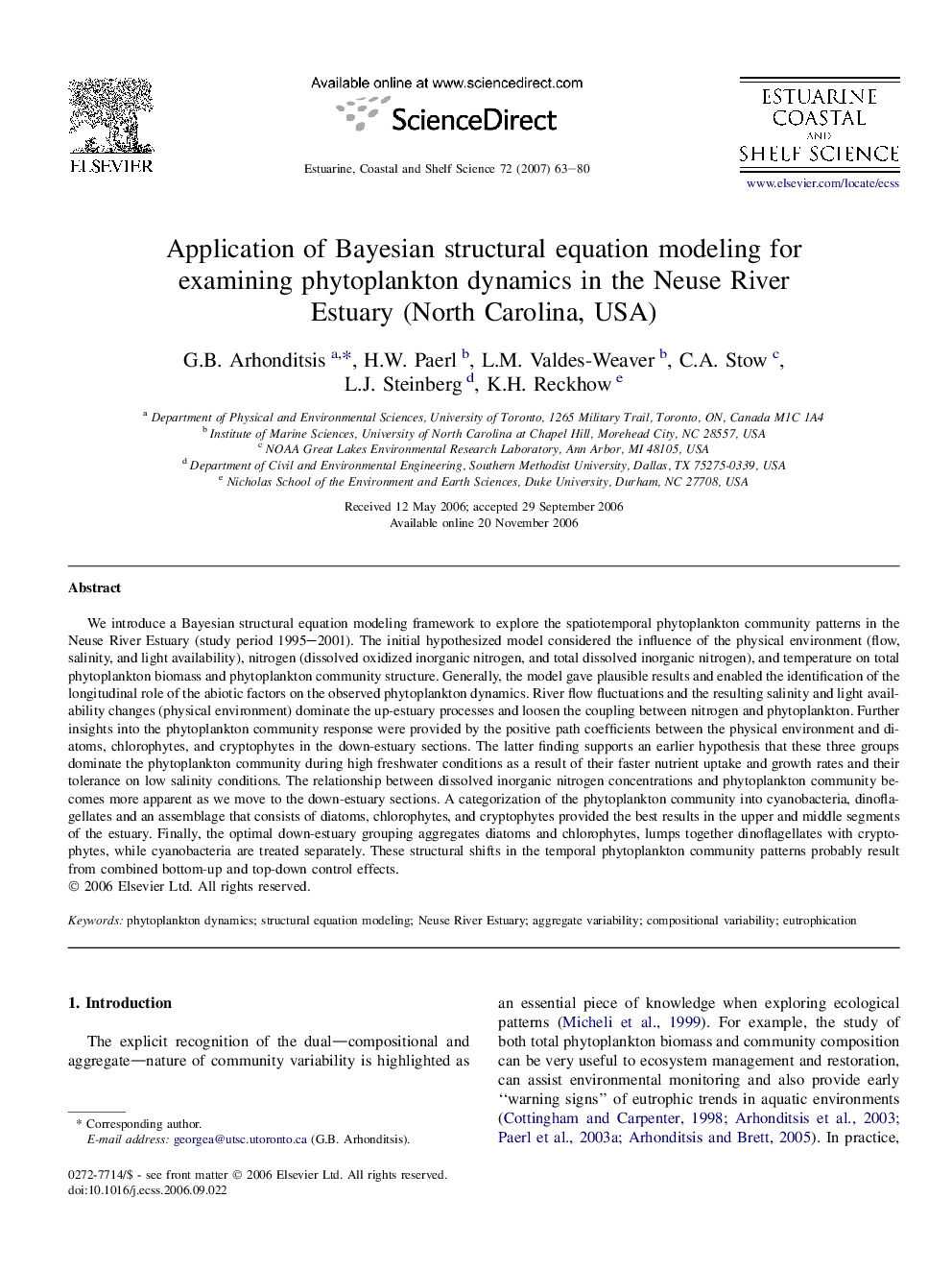| کد مقاله | کد نشریه | سال انتشار | مقاله انگلیسی | نسخه تمام متن |
|---|---|---|---|---|
| 4541995 | 1626705 | 2007 | 18 صفحه PDF | دانلود رایگان |
عنوان انگلیسی مقاله ISI
Application of Bayesian structural equation modeling for examining phytoplankton dynamics in the Neuse River Estuary (North Carolina, USA)
دانلود مقاله + سفارش ترجمه
دانلود مقاله ISI انگلیسی
رایگان برای ایرانیان
کلمات کلیدی
موضوعات مرتبط
مهندسی و علوم پایه
علوم زمین و سیارات
زمین شناسی
پیش نمایش صفحه اول مقاله

چکیده انگلیسی
We introduce a Bayesian structural equation modeling framework to explore the spatiotemporal phytoplankton community patterns in the Neuse River Estuary (study period 1995-2001). The initial hypothesized model considered the influence of the physical environment (flow, salinity, and light availability), nitrogen (dissolved oxidized inorganic nitrogen, and total dissolved inorganic nitrogen), and temperature on total phytoplankton biomass and phytoplankton community structure. Generally, the model gave plausible results and enabled the identification of the longitudinal role of the abiotic factors on the observed phytoplankton dynamics. River flow fluctuations and the resulting salinity and light availability changes (physical environment) dominate the up-estuary processes and loosen the coupling between nitrogen and phytoplankton. Further insights into the phytoplankton community response were provided by the positive path coefficients between the physical environment and diatoms, chlorophytes, and cryptophytes in the down-estuary sections. The latter finding supports an earlier hypothesis that these three groups dominate the phytoplankton community during high freshwater conditions as a result of their faster nutrient uptake and growth rates and their tolerance on low salinity conditions. The relationship between dissolved inorganic nitrogen concentrations and phytoplankton community becomes more apparent as we move to the down-estuary sections. A categorization of the phytoplankton community into cyanobacteria, dinoflagellates and an assemblage that consists of diatoms, chlorophytes, and cryptophytes provided the best results in the upper and middle segments of the estuary. Finally, the optimal down-estuary grouping aggregates diatoms and chlorophytes, lumps together dinoflagellates with cryptophytes, while cyanobacteria are treated separately. These structural shifts in the temporal phytoplankton community patterns probably result from combined bottom-up and top-down control effects.
ناشر
Database: Elsevier - ScienceDirect (ساینس دایرکت)
Journal: Estuarine, Coastal and Shelf Science - Volume 72, Issues 1â2, March 2007, Pages 63-80
Journal: Estuarine, Coastal and Shelf Science - Volume 72, Issues 1â2, March 2007, Pages 63-80
نویسندگان
G.B. Arhonditsis, H.W. Paerl, L.M. Valdes-Weaver, C.A. Stow, L.J. Steinberg, K.H. Reckhow,